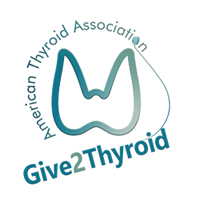THE FULL ARTICLE TITLE:
Ghaznavi SA et al 2018 Using the American Thyroid Association risk-stratification system to refine and individualize the American Joint Committee on Cancer eighth edition disease-specific survival estimates in differentiated thyroid cancer. Thyroid. Epub 2018 Aug 2.
SUMMARY OF THE STUDY
The authors studied 10-year survival in 4881patients less than 55-years-old with papillary or follicular thyroid cancer who were treated at the Memorial Sloan Kettering Cancer Centre between 1980 and 2016. Patients were first assigned to a stage based on the revised AJCC system (I or II). Then they were further divided into age group at diagnosis (younger = < 45 years; older = 45-55 year). Finally, the ATA-IRS recurrence risk stratification system (low, intermediate or high) was applied to the subgroups to see if a more refined and accurate estimate of DSS could be calculated.
Overall, there were 122 (2.5%) disease specific deaths in the entire < 55-year-old age group. By integrating the AJCC system with the ATA system, the authors were able to identify six different subgroups with differing outcomes: (i) stage I/ATA low risk, younger and older, 100% DSS; (ii) stage I/ATA intermediate risk, younger and older, 98% DSS; (iii) stage I/ATA high risk, younger, 95% DSS; (iv) stage I/ATA high risk, older, 89% DSS; (v) stage II/ATA high risk, younger, 78% DSS; and (vi) stage II/ATA high risk, older, 61% DSS.
WHAT ARE THE IMPLICATIONS OF THIS STUDY?
Not everybody less than 55 years old with thyroid papillary or follicular thyroid cancer has the same prognosis. A composite staging approach that integrates two different cancer staging systems (AJCC and ATA) identifies six distinct subgroups with progressively worse DSS and provides a more individualized estimate of survival. This will allow identification of patients that would benefit form more aggressive treatment of their thyroid cancer.
— Phillip Segal, MD




